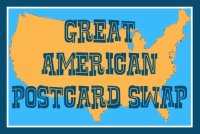
 One of my favorite stamping and printmaking mediums can be found at a hardware store or in just about any box store in the hardware section. It is cheap, easy to find, and you can also use it to seal up any drafts around your windows and doors:) It is roll of adhesive vinyl weather stripping tape. It come in a few different widths and is usually gray. I used the 1/2 inch width for the projects below, but have used thicker ones in the past. A roll should cost you about $3.00 and a little goes a long way. You also need cardboard scraps, masking tape, markers and paper. You can use tempera paint for a more vibrant result, but I prefer the markers. My 4-year-old enjoys coloring and re-coloring the stamp. If you use paint you really need to stick to a single color unless you want to take the time to really clean between colors. (If you do choose to use paint, I recommend painting the stamp with a brush rather than dipping it into the paint).
One of my favorite stamping and printmaking mediums can be found at a hardware store or in just about any box store in the hardware section. It is cheap, easy to find, and you can also use it to seal up any drafts around your windows and doors:) It is roll of adhesive vinyl weather stripping tape. It come in a few different widths and is usually gray. I used the 1/2 inch width for the projects below, but have used thicker ones in the past. A roll should cost you about $3.00 and a little goes a long way. You also need cardboard scraps, masking tape, markers and paper. You can use tempera paint for a more vibrant result, but I prefer the markers. My 4-year-old enjoys coloring and re-coloring the stamp. If you use paint you really need to stick to a single color unless you want to take the time to really clean between colors. (If you do choose to use paint, I recommend painting the stamp with a brush rather than dipping it into the paint).I have instructions for making a single stamp and a printing plate below.
1. To make a single stamp, start by cutting a scrap of cardboard into a square, about 3" x 3". Use a piece of masking tape to make a handle on one side (as pictured below).
 2. Cut the weather stripping tape into small pieces of various sizes and stick them onto the front of your stamp (when you unroll it for the first time be sure you do not peel it off the paper. You want to paper to be on until you are ready to stick it to the stamp).
2. Cut the weather stripping tape into small pieces of various sizes and stick them onto the front of your stamp (when you unroll it for the first time be sure you do not peel it off the paper. You want to paper to be on until you are ready to stick it to the stamp).
3. Color with markers.
 4. Start stamping! You will need to reapply the marker after every stamp. You can easily change color by stamping it on a scrap paper a few times to completely clean if off). This is a great project for introducing pattern.
4. Start stamping! You will need to reapply the marker after every stamp. You can easily change color by stamping it on a scrap paper a few times to completely clean if off). This is a great project for introducing pattern.
 2. Cut the weather stripping tape into small pieces of various sizes and stick them onto the front of your stamp (when you unroll it for the first time be sure you do not peel it off the paper. You want to paper to be on until you are ready to stick it to the stamp).
2. Cut the weather stripping tape into small pieces of various sizes and stick them onto the front of your stamp (when you unroll it for the first time be sure you do not peel it off the paper. You want to paper to be on until you are ready to stick it to the stamp).3. Color with markers.
 4. Start stamping! You will need to reapply the marker after every stamp. You can easily change color by stamping it on a scrap paper a few times to completely clean if off). This is a great project for introducing pattern.
4. Start stamping! You will need to reapply the marker after every stamp. You can easily change color by stamping it on a scrap paper a few times to completely clean if off). This is a great project for introducing pattern.1. Use a larger piece of cardboard. Cut the weather stripping into pieces and start arranging.








































